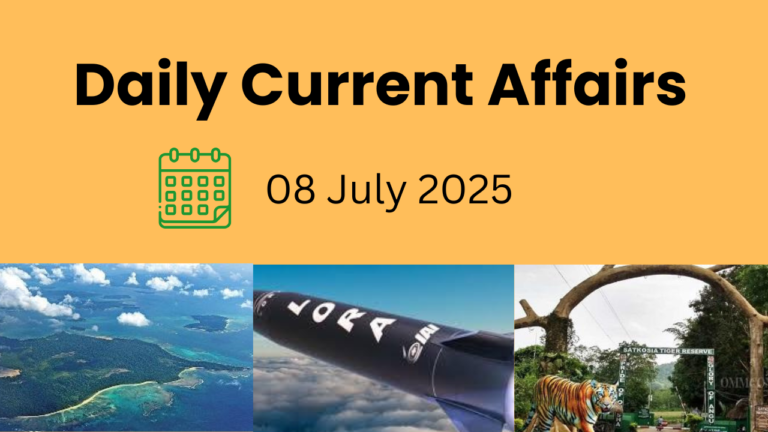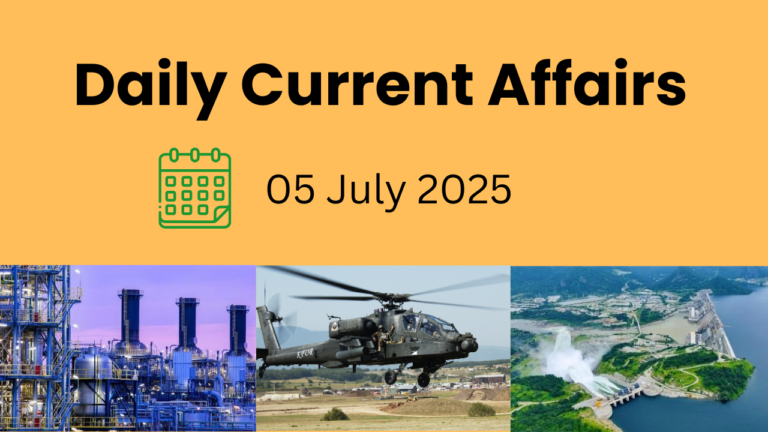1. Unveiling Thriving Ecosystems Beneath the George VI Ice Shelf: A Groundbreaking Discovery
Context: The George VI Ice Shelf is located in George VI Sound, nestled between Alexander Island and Palmer Land. It borders the Bellingshausen Sea in the Southern Ocean, a region rich in floating ice shelves and intricate underwater geography.
- Length: Extends from Ronne Entrance to Niznik Island.
- Governance: Falls under the Antarctic Treaty System, with active research primarily led by the UK and the USA.
Key Discoveries from the Challenger 150 Initiative:
The Challenger 150 Initiative has revealed remarkable findings beneath the George VI Ice Shelf, changing our understanding of marine ecosystems in extreme conditions.
Thriving Deep-Sea Ecosystems:
- Scientists uncovered a variety of flourishing ecosystems, including large corals, sponges, icefish, and giant sea spiders.
- These ecosystems have survived for centuries, despite being isolated from sunlight and surface nutrients.
- The presence of complex life in such extreme conditions suggests unknown nutrient transport pathways, opening exciting new avenues for scientific exploration.
New Species Identified:
- Among the unique discoveries were giant phantom jellyfish, octopi, vase-shaped sponges (potentially centuries old), and sea spiders.
What Are Deep-Sea Ecosystems?
Deep-sea ecosystems refer to marine habitats located below 200 meters in depth, primarily within the aphotic zone—a vast expanse comprising 90% of Earth’s marine environment. These ecosystems include:
- Abyssal Plains: These deep-sea plains host species like sea cucumbers, which rely on marine snow—organic particles that provide essential nutrients.
- Hydrothermal Vents: Rich in chemosynthetic life, such as tubeworms and yeti crabs, these ecosystems thrive in extreme conditions without sunlight.
- Whale Falls: The decaying bodies of whales create temporary, yet highly productive ecosystems, supporting creatures like hagfish.
Significance of the Discovery:
The findings under the Challenger 150 Initiative provide profound insights into marine science, challenging previous assumptions about life in extreme, nutrient-poor environments.
- Scientific Relevance: The discovery reshapes our understanding of life’s resilience, proving that ecosystems can thrive without the expected nutrient sources.
- Climate Change Insights: As polar ice shelves continue to melt due to global warming, these ecosystems may undergo drastic changes. Studying these deep-sea habitats offers crucial insights into how ecosystems might respond to climate change.
- Marine Conservation: The discovery underscores the urgency of creating robust international frameworks to protect the fragile marine biodiversity of the Southern Ocean.
International Cooperation & the Ocean Decade:
The Challenger 150 Programme is a key initiative within the UN Decade of Ocean Science for Sustainable Development (2021–2030). This effort emphasizes the importance of multilateral scientific collaboration in deep-ocean exploration and conservation.
Endorsed by UNESCO/IOC, the initiative is aligned with global sustainable development goals, particularly SDG 14 (Life Below Water), which aims to protect and restore marine ecosystems globally.
2. India’s Heat Action Plans Lack Long-Term Vision, Study Reveals
Context: A recent study has found that most Heat Action Plans (HAPs) in Indian cities lack long-term strategies to effectively combat extreme heat. Even cities with such plans face challenges in their implementation.
The report, titled “Is India Ready for a Warming World? How Heat Resilience Measures Are Being Implemented for 11% of India’s Urban Population in Some of Its Most At-Risk Cities,” was conducted by the Sustainable Futures Collaborative (SFC), a research organization based in New Delhi.
The study raises concerns that insufficient planning could lead to more heat-related fatalities as heatwaves intensify due to climate change.
Understanding Heat Action Plans (HAPs):
A Heat Action Plan (HAP) serves as an early warning and preparedness system designed to mitigate the impact of rising temperatures. These plans include both immediate interventions and long-term resilience strategies to protect vulnerable populations from heat-related health risks.
Key Components of Heat Action Plans:
Immediate Measures:
- Utilizing weather forecasts and early warning systems to alert authorities and the public.
- Conducting public awareness campaigns about heatwave dangers.
- Establishing cooling shelters and heat relief centres.
- Ensuring access to clean drinking water to prevent dehydration.
- Equipping hospitals with necessary medical supplies and training healthcare workers for heat-related emergencies.
Long-Term Strategies:
- Urban planning solutions such as increasing tree cover and green spaces to reduce heat.
- Using heat-resistant building materials to minimize the urban heat island effect.
- Implementing cool roofing technology to keep indoor temperatures lower.
- Enhancing coordination among government agencies, healthcare systems, and emergency responders for effective heatwave management.
Implementation of Heat Action Plans in India:
As of July 2024, the National Disaster Management Authority (NDMA) reported that HAPs are being implemented in 23 heatwave-prone states in partnership with state governments.
India’s Escalating Heatwave Crisis:
Early Arrival of Extreme Heat:
- February 2024 witnessed record-breaking temperatures, with official heatwave alerts in Goa and Maharashtra.
- States like Odisha, Telangana, and Maharashtra recorded temperatures exceeding 40°C.
- 31 States and Union Territories saw night temperatures at least 1°C above normal, with 22 states/UTs experiencing 3°C to 5°C higher-than-usual temperatures.
Rising Heatstroke Fatalities:
- Data from the NDMA reveals a worrying increase in heatstroke deaths, rising from 530 in 2020 to 730 in 2022.
- However, in 2024, official reports indicated a decline, with 269 suspected and 161 confirmed heatstroke deaths.
- Contradicting this, the non-profit organization HeatWatch recorded 733 heat-related deaths across 17 Indian states between March and June 2024, raising concerns over data accuracy and heatwave preparedness.
Key Insights from the Study : The research identified nine major Indian cities, each with a population of over one million, expected to face severe increases in dangerous heat levels. The study was based on 88 interviews with officials from city, district, and state governments, as well as representatives from disaster management, healthcare, urban planning, and labor sectors.
Major Findings:
- Short-Term Measures Exist: All nine cities have emergency protocols, such as access to drinking water and adjusted work schedules, to tackle immediate heat risks.
- Long-Term Planning is Lacking: Essential long-term solutions—including cooling solutions for vulnerable groups, insurance for lost wages, fire safety measures, and electricity grid upgrades—were either absent or poorly executed.
- Uncoordinated Urban Planning Efforts: While efforts like expanding urban greenery are being made, they lack a focused strategy to help the most at-risk populations.
- Over-Reliance on Healthcare Solutions: Most long-term strategies were geared toward treating heat-related illnesses, rather than preventing heat exposure in the first place.
- Institutional and Financial Challenges:
- A lack of coordination between municipal, district, and state departments remains the biggest hurdle.
- Limited funding is another major barrier to implementing sustainable heat resilience strategies.
The Need for a Comprehensive National Heat Strategy:
As global efforts to curb greenhouse gas emissions continue to lag, India must prioritize heat adaptation strategies.
Key Actions for a National Heat Strategy:
- Integrating sustainable cooling solutions like green buildings, passive cooling techniques, and urban greening into city planning.
- Avoiding over-reliance on air conditioning, which exacerbates environmental damage due to ozone-depleting refrigerants.
- Strengthening national policies to ensure that heat resilience strategies are well-funded, well-coordinated, and effectively implemented.
- Developing a National Heat Strategy as part of India’s National Adaptation Plan, ensuring its inclusion in global discussions ahead of COP30 in Brazil.
This study highlights the urgent need for India to move beyond short-term emergency responses and develop a long-term, sustainable approach to combat rising heatwaves and protect its urban population.
3. Judiciary’s In-House Inquiry & Removal of Judges in India: A Detailed Overview
Context: Chief Justice of India (CJI) Sanjiv Khanna has initiated an unprecedented in-house inquiry into Delhi High Court judge Justice Yashwant Varma. This follows an incident where bundles of cash were allegedly discovered at his residence after a fire broke out on March 14, 2025.
Unlike the constitutional impeachment process, this in-house inquiry is an internal mechanism for judicial accountability. A three-member panel has been formed to investigate the allegations. The inquiry panel comprises:
- Chief Justice Sheel Nagu (Punjab & Haryana High Court)
- Chief Justice G S Sandhawalia (Himachal Pradesh High Court)
- Justice Anu Sivaraman (Karnataka High Court)
How Can a Judge Be Removed in India?
Constitutional Provisions:
The process of removing a Supreme Court judge is governed by Article 124(4) of the Indian Constitution, while Article 218 extends these provisions to High Court judges.
Grounds for Removal:
A judge can be removed only on two specific grounds:
- Proven Misbehaviour
- Incapacity
The Impeachment Process:
The removal of a judge follows a strict parliamentary procedure, which involves:
- Impeachment Motion
- A motion is introduced in either Lok Sabha or Rajya Sabha.
- It requires the approval of two-thirds of the members present and voting in each House.
- Additionally, the votes in favour must exceed 50% of the total membership of that House.
- Final Approval
- If both Houses approve, the President of India issues an order for removal.
- If Parliament is dissolved or its tenure ends before the process is completed, the impeachment motion fails automatically.
The In-House Procedure for Judicial Accountability:
Why Was an Internal Mechanism Needed?
The need for an internal disciplinary system arose after allegations of financial misconduct against Bombay High Court Chief Justice A M Bhattacharjee in 1995. The Supreme Court, in the case C. Ravichandran Iyer v. Justice A.M. Bhattacharjee (1995), observed that there was a gap between bad behaviour and impeachable misconduct under Article 124.
To address this, a five-member committee was formed to devise an internal mechanism for handling complaints against judges. The Supreme Court adopted the procedure in December 1999.
Revisions in 2014:
In 2014, a sexual harassment complaint against a Madhya Pradesh High Court judge led the Supreme Court to further refine the in-house inquiry process in Additional District and Sessions Judge ‘X’ v. Registrar General High Court of Madhya Pradesh. Justices J S Khehar and Arun Mishra outlined a seven-step process for handling judicial misconduct.
How Does the In-House Inquiry Work?
Step 1: Receiving the Complaint
- Complaints can be submitted to the CJI, a High Court Chief Justice, or the President of India.
- The High Court Chief Justice or the President forwards the complaint to the CJI.
- If the CJI finds the complaint frivolous or baseless, it is dismissed.
Step 2: Preliminary Inquiry
- The CJI may request a preliminary report from the concerned High Court Chief Justice.
- If the preliminary findings suggest serious misconduct, the CJI conducts a further review.
Step 3: Formation of an Inquiry Committee
- If the CJI determines a formal inquiry is necessary, a three-member committee is formed.
- This typically includes:
- Two Chief Justices of High Courts
- One Senior High Court Judge
- The committee follows natural justice principles, ensuring the accused judge gets a fair opportunity to present their case.
Step 4: Conducting the Inquiry
- The committee investigates the allegations and submits a confidential report to the CJI.
- The report classifies the misconduct as:
- Not serious enough for action
- Serious enough to warrant resignation or removal
Step 5: Post-Inquiry Actions
- If the misconduct is minor, the CJI may issue an advisory to the judge.
- If the misconduct is serious, the CJI advises the judge to resign or retire voluntarily.
- If the judge refuses to step down, the CJI can instruct the High Court Chief Justice to stop assigning them judicial work.
- If the judge still does not resign, the CJI informs the President and the Prime Minister, recommending formal removal proceedings.
Why Is This Inquiry Significant?
The ongoing in-house inquiry against Justice Yashwant Varma demonstrates the Supreme Court’s commitment to judicial accountability without needing a lengthy impeachment process. As a precautionary measure, CJI Sanjiv Khanna has already directed Delhi High Court Chief Justice D K Upadhyaya to stop assigning cases to Justice Varma.
This case highlights the effectiveness of the in-house inquiry mechanism, ensuring that judicial officers uphold integrity while maintaining the independence of the judiciary.
4. Places in News: Iran & Its Strategic Importance
Context: Iran’s Revolutionary Guards have unveiled new missile systems on three strategically significant islands in the Persian Gulf—Greater Tunb, Lesser Tunb, and Abu Musa. These islands, located near the Strait of Hormuz, hold immense geopolitical importance as a major global oil transit route.
Political Overview of Iran:
Location & Borders:
Iran is situated in the Middle East, bordered by:
- South: Gulf of Oman and Persian Gulf
- North: Caspian Sea
- West: Iraq
- Northwest: Turkey
- North: Armenia & Azerbaijan
- East: Afghanistan & Pakistan
- Northeast: Turkmenistan
Strategic Significance:
- Strait of Hormuz: This crucial waterway handles one-fifth of the world’s oil trade, making it a global flashpoint.
- Military Presence: Iran has frequently reinforced its military presence in the Persian Gulf to counter regional tensions.
- Energy Powerhouse: Iran holds the world’s second-largest natural gas reserves and fourth-largest crude oil reserves.
Geographical Highlights of Iran:
Landforms & Terrain:
Iran’s landscape is dominated by the Iranian Plateau, which features:
- Vast Deserts:
- Dasht-e Kavir (Great Salt Desert)
- Dasht-e Lut (Lut Desert) (One of the hottest places on Earth)
- Mountain Ranges:
- Zagros Mountains (West) – A natural barrier between Iran and Iraq.
- Alborz Mountains (North) – Home to Mount Damavand (5,609 m), the highest peak in the Middle East.
Major Rivers:
- Karun River – Iran’s only navigable river, crucial for trade.
- Safid River – Flows into the Caspian Sea, vital for agriculture.
Why Iran is in the Global Spotlight?
- Energy Hub: Iran’s oil and gas reserves are critical for global energy security.
- Military & Defense: Iran frequently upgrades its defense capabilities, leading to regional tensions.
- Nuclear Controversy: Its nuclear program remains a subject of international negotiations.
- Geopolitical Influence: Iran plays a key role in Middle Eastern politics, often at odds with the U.S., Israel, and Gulf nations.
With Iran reinforcing its military presence in the Gulf, global powers are closely monitoring developments. The Strait of Hormuz remains a strategic chokepoint, where any conflict could have far-reaching economic consequences.
5. Tackling Black Carbon: A Fast-Track Solution for Climate & Clean Air Benefits
Context: A recent report by the Clean Air Fund highlights that cutting down black carbon—alongside other super pollutants—is the fastest way to achieve immediate climate gains while simultaneously improving air quality, public health, and economic growth.
What is Black Carbon?
Black carbon, commonly known as soot, is a major component of fine particulate air pollution (PM2.5). It is classified as a Short-Lived Climate Pollutant (SLCP), remaining in the atmosphere for just days to weeks, yet exerting a disproportionate warming effect.
Major Sources of Black Carbon Emissions:
- Fossil Fuel Combustion (coal, diesel engines)
- Biomass Burning (wood, crop residue, wildfires)
- Industrial Processes (brick kilns, waste burning)
Top Global Emitters:
- China – World’s largest black carbon emitter
- India – Second-largest emitter, with major contributions from biomass burning and diesel transport
The Alarming Impact of Black Carbon:
A Major Driver of Global Warming:
Black carbon is one of the key super pollutants, alongside methane, responsible for nearly half of global warming. Unlike CO₂, which stays in the atmosphere for centuries, black carbon traps heat immediately, making its reduction a quick-win strategy for climate mitigation.
Regional Climate Disruptions:
- Accelerated Ice & Glacier Melting – Black carbon deposits on snow and ice, reducing reflectivity and increasing melting rates. It accounts for 39% of mass loss in the Yala Glacier (Tibetan Plateau).
- Monsoon Disturbances – Disrupts Asian & West African monsoons, increasing risks of floods & droughts.
Public Health & Air Pollution:
- Causes respiratory diseases, heart conditions, and premature deaths due to toxic fine particulate pollution (PM2.5).
- Over 7 million premature deaths annually are linked to air pollution, with black carbon being a significant contributor.
Key Solutions to Reduce Black Carbon:
- Target High-Impact Sectors in the Arctic – Curb emissions from gas flaring, shipping, and residential heating to protect fragile ecosystems.
- Integrate Black Carbon Reduction into National Policies – Countries must include black carbon targets in their clean air laws and climate strategies, especially in revisions of their Nationally Determined Contributions (NDCs).
- Strengthen Waste Management Systems – Preventing open waste burning and improving solid waste disposal can significantly cut black carbon emissions.
The Takeaway:
Reducing black carbon offers a double benefit—an immediate slowdown of climate change and a significant improvement in public health. With rapid, coordinated action, we can make a real difference in both the climate fight and air pollution crisis.
6. Farakka Barrage: 50 Years of Engineering Marvel & Water Diplomacy
Context: The Farakka Barrage, a key water infrastructure project on the Ganga River, marks 50 years of operation in 2025. Since its commissioning on April 21, 1975, this massive structure has played a critical role in water management, navigation, and India-Bangladesh river relations.
About Farakka Barrage:
Location & Strategic Importance:
- Situated in Murshidabad district, West Bengal, just 18 km from the Bangladesh border.
- A key structure influencing the hydrology of both India and Bangladesh.
Construction & Commissioning:
- Built over 12 years at a cost of 130 crores.
- Officially operational since April 21, 1975.
Purpose & Functionality:
- Ensures smooth navigation for the Kolkata Port by flushing out silt from the Bhagirathi-Hooghly River.
- Diverts 40,000 cusecs of water into the Farakka Feeder Canal to maintain Hooghly River flow, especially during the dry season.
- Plays a crucial role in India-Bangladesh water-sharing agreements.
India-Bangladesh Water Agreements:
- 1977 Farakka Agreement – First formal pact on Ganga water-sharing between India and Bangladesh.
- 1996 Ganga Water Treaty – A 30-year agreement ensuring equitable distribution of Ganga waters, still in effect today.
Hooghly River & Its Significance:
Origin & Course:
- Also called Bhagirathi-Hooghly or Kati-Ganga.
- A 260 km-long distributary of the Ganga River.
The Ganga splits in Murshidabad, forming two rivers:
- Padma River – Flows into Bangladesh.
- Hooghly River – Flows through West Bengal into the Bay of Bengal.
Hydrology & Water Flow:
- Above Kolkata, the Hooghly River is heavily silted.
- The Farakka Feeder Canal supplies additional water, especially in the dry season.
Tributaries feeding the Hooghly include:
- Haldi River
- Ajay River
- Damodar River
- Rupnarayan River
Cities & Bridges Along the Hooghly River:
Major Cities on Its Banks:
- Jiaganj
- Azimganj
- Murshidabad
- Baharampur
- Kolkata
- Howrah
Iconic Bridges Over Hooghly River:
- Howrah Bridge – A cantilever bridge linking Kolkata & Howrah, an engineering marvel.
- Bally Bridge – Connects Bally & Baranagar, an important transport link.
Why Farakka Barrage Matters?
- Essential for Kolkata Port’s Survival – Prevents silt buildup and maintains navigability.
- Key to Water Management – Ensures a steady flow to Hooghly while balancing Bangladesh’s needs.
- Vital for Indo-Bangladesh Relations – A focal point in water-sharing diplomacy between the two nations.




